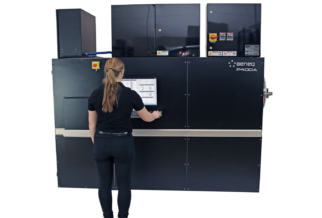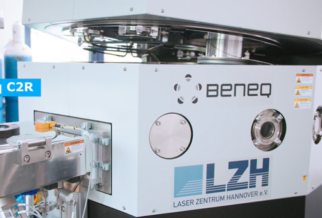ANTIREFLECTION COATINGS
Mobile Camera Lens Coatings
Today, nearly all photos are taken on smartphones, resulting in mobile phone camera quality becoming a key selling point of mobile devices. As cameras continue to miniaturize and improve, lens design and element structures inevitably become more complex. ALD offers robust manufacturing solutions for antireflective coatings on next-generation mobile camera lenses.

Mobile handset Original Equipment Manufacturers (OEMs) are constantly in pursuit of smaller, more light-weight and better performing camera modules. This poses numerous challenges for optical engineers when designing lens components for next-generation mobile phone cameras.
To meet these specifications, two synergetic shifts have taken place in mobile phone camera lens design: a pivot to plastic, aspheric lenses and an increase in the number of lens elements.
This article takes a look at the reasons for these changes and why ALD has emerged as an important tool for enhancing camera lens coatings.
Polymers prevail
Let’s begin with the new lenses: plastic, aspherical lenses. Traditional lens designs were achieved with bulky, spherical glass lenses that used straightforward calculations to direct light to the photodetector. However, miniaturization and weight considerations have rendered these types of solutions nearly obsolete in today’s mobile phones.
Plastic lenses are much more lightweight than their glass counterparts, making them an obvious choice for implementation in devices that people carry around every day.
Polymer lenses are also easier to manufacture. Over 1.5 billion smartphones are sold annually, each containing multiple cameras with several lens elements (with this number increasing). Utilizing methods like injection-molding, the billions of polymer lenses needed each year can be manufactured more simply and affordably than glass.
But producing smaller lens modules isn’t as simple as just making smaller lenses. Each tiny change to the thickness and shape of the lens will have some effect on the resultant direction of the incoming light. This is often corrected by varying the refractive index of the lens; however, plastic lenses have a limited refractive index range. Thus, the use of more freeform, aspheric lenses are necessary to correct for aberrations in the light. Fortunately, plastic lenses are easy to mold into these complex shapes.

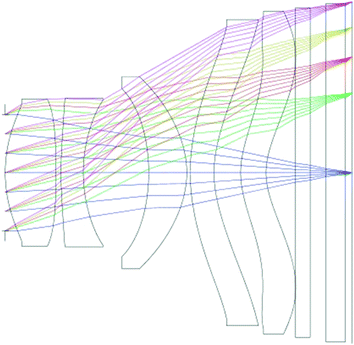
More lenses, more (or fewer?) problems
If polymer lenses work so well, then why are there so many in mobile phone cameras? When it comes the the number of lenses, more typically means better. Different wavelengths of light will be bent and directed in different directions when interacting with a lens element.
In other words the more lenses there are correcting the light’s path on its way to the detector, the better the image quality that will be returned. This is especially important when it comes to mobile phone cameras.
For example, take a typical DSLR camera. Some lenses may consist of multiple elements, but offer the option to adjust the lenses and the resulting focal length of the entire module. This capability is just not possible in the limited space on the back of a smartphone so the entire system must operate with fixed lenses.
Knowing that plastic lenses are limited in their index of refraction, one can understand why multiple lenses are necessary in mobile phone camera modules.
To achieve the best possible image quality in such a small space, mobile phone cameras have featured up to eight stacked aspheric lenses, with some companies claiming they may even have up to 10 in future devices. A liberal estimate could put next-generation mobile devices with an average of three cameras, each containing 10 lenses. By multiplying these 30 lenses with the 1.5 billion smartphones sold each year, an estimated 2 trillion annual pictures could potentially be taken with 45 billion lenses.
Camera lens coatings with ALD
So what does all of this have to do with atomic layer deposition (ALD)? While camera lenses look unaltered, they often feature an antireflection or antiglare coating. These are extremely important in achieving high-quality pictures without flares or ghost images. The purpose of these coatings is to reduce reflection at material interfaces that cause artifacts in images.
Antireflective (AR) coatings are designed so that reflected light will destructively interfere with itself, preventing unwanted reflected light from reaching the photodetector. Since light is reflected at every interface, high-performance AR optical coatings become even more necessary with each additional lens.
ALD provides a straightforward method for depositing antireflective coatings with high conformality on complex shapes. Because the ALD process deposits the same amount of material on all surfaces with 100% cover, it is practically tailor-made for fabricating AR coatings for mobile phone lens applications.
Not only can ALD provide a near perfectly uniform film on complex lens geometries, but it can easily be scaled to coat hundreds to thousands of lenses in a single batch. In fact, low-temperature and plasma-enhanced ALD processes are commonly used to prevent damage to the soft polymer material.
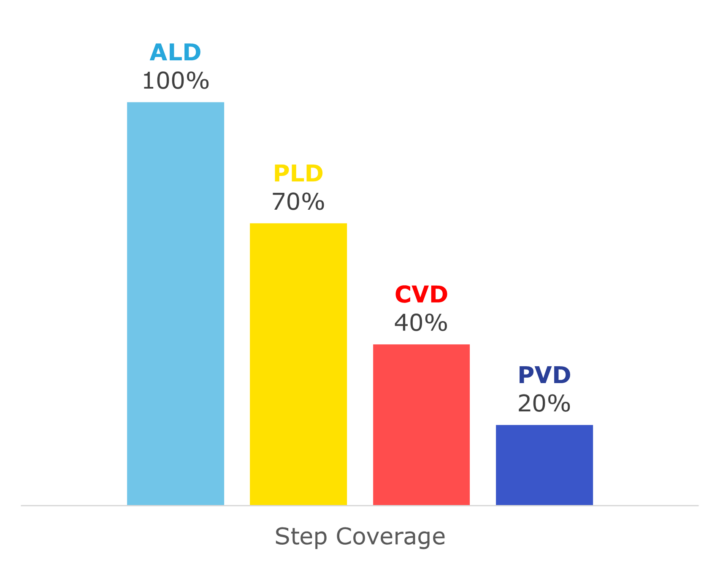

The innovative Beneq AtomGrass™ wide-angle, broadband antireflective coating has an average reflectance of less than 0.07% in the range of 380-1000 nm and performs consistently up to angle of incidence of 50 degrees.
In addition to offering exceptional AR performance, the coating is only 150 nm thick – a fraction of traditional AR coatings. It can also be tuned to different bands and reflection minima by varying the composition. Learn more about this application in this post on Beneq’s blog.
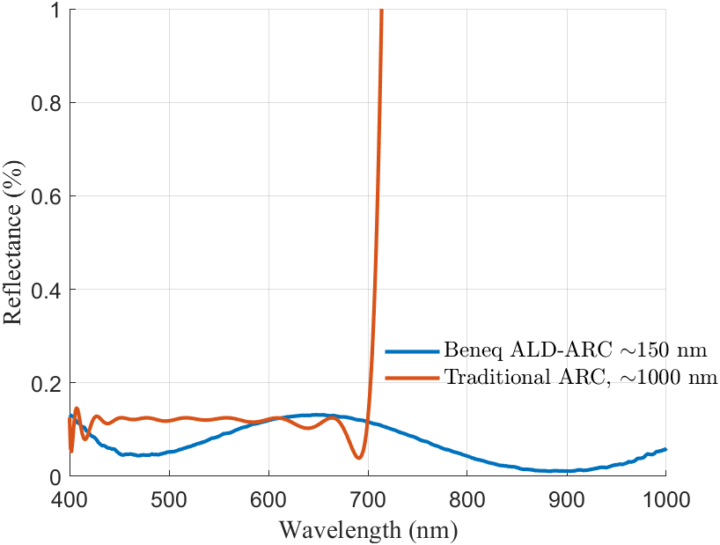
ALD in mobile phone cameras today
ALD has, in fact, already made its way into today’s mobile phone cameras. In 2022, Xiaomi quietly introduced ALD antireflective coatings on the lens elements in the cameras of their new Redmi 12S smartphone. It is anticipated that more OEMs will begin adopting ALD as the coating technology for their mobile camera lenses.
According to a survey by Android Authority, half of consumers consider the quality of a smartphone’s camera as a key factor in making their purchase¨. An entire quarter (25%) of respondents said they valued a smartphone’s camera above all other features.
Considering the strong significance of camera quality as a deciding factor for 3 out of 4 consumers, it is no surprise OEMs will continue to invest in the best technologies they can find. With ALD powering the next generation of mobile phone cameras, the picture will certainly tell the story.
¨https://www.androidauthority.com/smartphone-camera-poll-results-1204074/
Learn more about Beneq’s ALD solutions and equipment on the Optical Coatings page!

